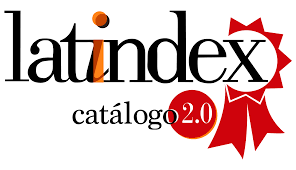Ethnomathematics: Playful hydraulics from the geometric figures of awajún ceramics
DOI:
https://doi.org/10.55996/dekamuagropec.v2i2.61Keywords:
Awajún pottery, ethnomathematics, hydraulics, tangramAbstract
The objective of this research is to reassess the mathematical knowledge that is evidenced in Awajún ceramics and link them as a playful strategy for teaching canal hydraulics to civil engineering students of the "Fabiola Salazar Leguía" National Intercultural University of Bagua. The methodology used consisted of conducting observational and descriptive studies. The relevance of the approach lies in describing the ancestral practices and customs of a given community in relation to its cultural context. The research was developed in three stages: i) Documentary review, as well as graphic and virtual sources of information on Awajún ceramics. ii) Samples of Awajún ceramics were collected and interviews were conducted with Awajún women. iii) Profiles of hydraulic channels were elaborated whose reference are the geometric figures that appear in the Awajún ceramics molded in pieces of the tangram. Likewise, some ceramic designs were digitized. The results obtained were the systematization of the information regarding the inputs used for the elaboration of the Awajún ceramics, as well as the identification of the geometric figures that appear recurrently in this ceramic, mainly in the piníg and amamuk. It is concluded that, in the Awajún ceramics, it is evident that its inhabitants have an elementary knowledge of geometry, mainly of the circle, triangle and lines. and that, using the pieces of the tangram, based on the triangle of the geometric figures of Awajún pottery, it is shown that the hydraulic radius is the best in trapezoidal channel conditions.
Downloads
References
Alarcón, R., & Flores, H. (2021). Aplicación de algoritmos etnomatemáticos en el aprendizaje significativo de estudiantes universitarios. INNOVA Research Journal, 6(1), 195–215. https://doi.org/10.33890/innova.v6.n1.2021.1522
Aldama, Á., & Ocón, A. (2002). Resistencia alflujo en canales y límites de aplicabilidad de la fórmula de Manning. Ingenieria Hidraulica En Mexico, 17(1), 107–115. http://repositorio.imta.mx/handle/20.500.12013/752
Beltrón, J., Hernández, L., & Carrasco, T. (2019). Competencia modelación matemática: concepciones y situación diagnóstica en carreras de Ingeniería. Revista Cubana de Educación Superior, 38(2), 1–12. http://scielo.sld.cu/scielo.php?script=sci_abstract&pid=S0257-43142019000200005&lng=es&nrm=iso
Blanco, H., Fernández, A., & Oliveras, M. (2017). Formación de Profesores de Matemáticas desde la Etnomatemática: Estado de desarrollo. Bolema -Mathematics Education Bulletin, 31(58), 564–589. https://doi.org/10.1590/1980-4415v31n58a02
Camargo, L. (2011). El legado de Piaget a la didáctica de la Geometría. Revista Colombiana de Educación, 60, 41–60. https://doi.org/10.17227/01203916.840
Castellanos, H., Collazos, C., Farfan, J., & Meléndez, F. (2017). Diseño y construcción de un canal hidráulico de pendiente variable. Informacion Tecnologica, 28(6), 103–114.
Castro, A., Rodríguez, C., Aravena, L., Loncomilla, A., & Pizarro, D. (2020). Nociones matemáticas evidenciadas en la práctica cotidiana de un carpintero del sur de Chile. Revista Científica, 39(3), 278–295. https://doi.org/10.14483/23448350.16270
D’Ambrosio, U. (2014). Las bases conceptuales del Programa Etnomatemática. Revista Latinoamericana de Ethnomatemática, 7(2), 100–107. http://www.redalyc.org/articulo.oa?id=274031870007
Espinosa, J., & León, J. (2019). Propuesta para la elaboración y utilización del Tangram y el geoplano en el proceso de enseñanaza-aprendizaje de la geometría de la educación infantil. Revista Conrado, 15(69), 181–186. http://scielo.sld.cu/scielo.php?script=sci_arttext&pid=S1990-86442019000400181
Fuentes, C. (2014). Algunos enfoques de investigación en Etnomatemática. Revista Latinoamericana de Etnomatemática, 7(1), 155. https://www.revista.etnomatematica.org/index.php/RevLatEm/article/view/107
García, J. (2007). Conocimientos geométricos en la elaboración de un artefacto en una comunidad ñuu savi. Revista de Investigación Educativa de La REDIECH, 10(19), 105–120. https://doi.org/10.33010/ie_rie_rediech.v10i19.634
Huapaya, E., & Salas, C. (2008). Uso de las ideas matemáticas y científicas de los Incas, en la enseñanza-aprendizaje de la geometría. Revista Latinoamericana de Etnomatemática,1(1),4–11.
Inoach, G. (2021). Proceso de constitución del gobierno territorial autónomo awajún. Revista Amazonía Peruana, 17(34), 13–29. https://doi.org/10.52980/revistaamazonaperuana.vi34.256
Mejía, D., & Benavides, H. (2017). Cálculo del coeficiente de rugosidad “n” para canales trapezoidales con presencia de sedimento (Ø = 0.05 mm). Tecnocienca Chihuahua, XI(2), 69–81. https://vocero.uach.mx/index.php/tecnociencia/artic
Micelli, M., & Crespo, C. (2011). La Geometría Entretejida. Revista Latinoamericana de Ethnomatemática, 4(1), 4–20. https://www.redalyc.org/articulo.oa?id=274019440001
Ministerio de Cultura del Perú. (2015). Cerámica tradicional awajún. www.cultura.gob.pe
Ministerio de Educación del Perú. (2013). Geometría y Cestería de los Bora en la Amazonía Peruana. www.minedu.gob.pe
Nolte, J. (2021). Gráfica awajún : geometría del universo (Primera). KWY Ediciones de Musuk Nolte.
Olivas, R., Mancera, F., & Romero, R. (2016). La etnomatemática: los saberes matemáticos de los pueblos originarios. RECIE. Revista Electrónica Científica de Investigación Educativa, 3(1), 123–136. https://www.rediech.org/ojs/2017/index.php/re
Ordinola, C., Barrena, M., Gamarra, O., Rascón, J., Corroto, F., Taramona, L., & Mejía, F. (2019). Creencias y costumbres de madres y parteras para la atención del embarazo, parto y puerperio en el distrito de Huancas (Chachapoyas, Perú). Arnaldoa, 26(1), 325–338. https://doi.org/10.22497/arnaldoa.261.26115
Pamplona, J., Cuesta, J., & Cano, V. (2019). Estrategias De Enseñanza Del Docente En Las Áreas Básicas: Una Mirada Al Aprendizaje Escolar. Revista Eleuthera, 21, 13–33. https://doi.org/10.17151/eleu.2019.21.2
Regan, J. (2020). Territorio, género y construcción de canoas entre los awajún-shuar y los kokama-omagua. Amazonia Peruana, 17(33), 147–162. https://doi.org/10.52980/revistaamazonaperuana.vi33.23
Rey, M., & Aroca, A. (2011). Medición y estimación de los albañiles, un aporte a la educación matemática. Revista U.D.C.A Actualidad & Divulgación Científica, 14(1), 137–147. http://www.scielo.org.co/scielo.php?script=sci_arttext&pid=S0123-42262011000100017&lang=pt%0Ahttp://www.scielo.org.co/pdf/rudca/v14n1/v14n1a17.pdf
Rodríguez, C. (2021). Conexiones etnomatemáticas entre conceptos geométricos en la elaboración de las tortillas de Chilpancingo, México. Revista de Investigación, Desarrollo e Innovación, 11(2), 273–296. https://doi.org/10.19053/20278306.v11.n2.2021.12756
Ruiz, N. (2009). Medios y recursos para la enseñanza de la geometría en la educación obligatoria. Revista de Didácticas Específicas, 3, 8–24. https://revistas.uam.es/didacticasespecificas/art
Sánchez, M., García, J., Steffens, E., & Hernández, H. (2019). Estrategias Pedagógicas en Procesos de Enseñanza y Aprendizaje en la Educación Superior incluyendo Tecnologías de la Información y las Comunicaciones.
Información Tecnológica, 30(3), 277–286. https://doi.org/10.4067/s0718-07642019000300277
Saumell, N. (2021). La etnomatemática. Su importancia para un proceso de enseñanza aprendizaje con significación social y cultural. Revista Conrado, 17(82), 1-103–110. https://conrado.ucf.edu.cu/index.php/conrado/article/view/1937/1896
Scribano, A. (2020). La vida como Tangram : Hacia multiplicidades de ecologías emocionales. Revista Latinoamericana de Estudios Sobre Cuerpos, Emociones y Sociedad, 33(12), 4–7. http://www.relaces.com.ar/index.php/relaces/article/view/2
Unda, F. (2020). Interacciones docentes-estudiantes y prácticas sexistas en el aula del sistema de educación intercultural bilingüe. Revista Scientific, 5(15), 129–149. https://doi.org/10.29394/Scientific.issn.2542-2987.2020.5.15.6.129-149
Published
How to Cite
Issue
Section
License
Copyright (c) 2022 Ronald Omar Estela Urbina, Elisa Contreras Barsallo, Jean Erich Vásquez Delgado, Daniel Jeremy Pósito Díaz, Janett Ignacia Vásquez Julca, Segundo Gerson Ugkum Samekash

This work is licensed under a Creative Commons Attribution-NonCommercial 4.0 International License.
Los autores que publican en esta revista aceptan los siguientes términos:
- Los autores conservan los derechos de autor y conceden a la revista el derecho publicación con la obra, simultáneamente licenciada bajo una licencia de Creative Commons CC By que permite a otros compartir el trabajo, pero citando la publicación inicial en esta revista.
- Los autores pueden celebrar acuerdos contractuales adicionales separados para la distribución no exclusiva de la versión publicada de la obra de la revista (por ejemplo, publicarla en un repositorio institucional o publicarla en un libro), pero citando la publicación inicial en esta revista.
- Se permite y anima a los autores a publicar su trabajo en línea (por ejemplo, en repositorios institucionales o en su sitio web) antes y durante el proceso de presentación, ya que puede conducir a intercambios productivos, así como una mayor citación del trabajo publicado (https://web-archive.southampton.ac.uk/opcit.eprints.org/oacitation-biblio.html)















